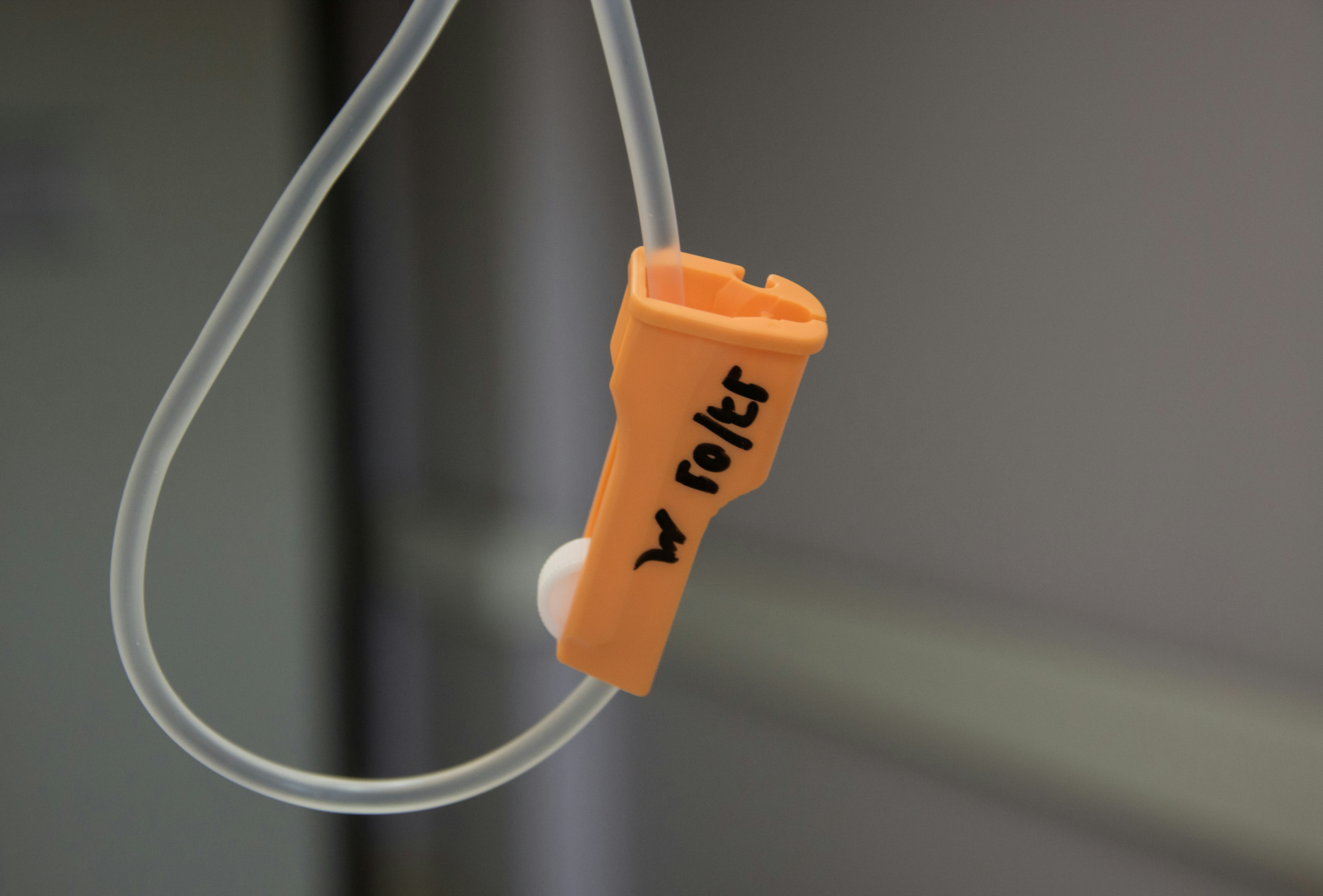In this article, we will explore the most effective methods for preventing and treating hot spots in dogs. These irritating and painful skin irritations can be a common problem for our furry companions, but with the right knowledge and care, we can help alleviate their discomfort and prevent future occurrences. So, let’s dive into the world of hot spots and discover the best approaches to keep our beloved dogs happy and healthy.
Prevention Methods
Keeping Dogs Clean and Dry
One of the most important ways to prevent hot spots in dogs is to keep them clean and dry. Regular bathing can help remove dirt and bacteria from their skin, reducing the risk of hot spots developing. Be sure to use a gentle, dog-friendly shampoo and thoroughly rinse to prevent any residue from irritating their skin.
After bathing, it is crucial to dry your dog thoroughly. Wet fur creates the perfect environment for bacteria and fungi to thrive, leading to hot spots. Use a towel to absorb as much moisture as possible, and if needed, use a blow dryer on a low, cool setting to ensure their coat is completely dry.
Proper Nutrition
Another key factor in preventing hot spots is providing your dog with a balanced and nutritious diet. Proper nutrition is vital for maintaining a healthy immune system and promoting overall skin health. Ensure their diet includes high-quality proteins, omega-3 fatty acids, and essential vitamins and minerals.
Consult with your veterinarian to determine the best diet for your dog’s specific needs. They can recommend appropriate dog food brands or even suggest adding supplements to support their skin and immune system health.
Regular Grooming
Regular grooming plays a significant role in preventing hot spots. Brushing your dog’s coat daily helps remove loose fur and prevents matting, which can trap moisture and bacteria. In addition, grooming allows for early detection of any skin issues, including hot spots.
While brushing, pay close attention to any redness, irritation, or unusual lumps on your dog’s skin. If you notice any abnormalities, take note and consult your veterinarian if necessary. Early intervention can help prevent hot spots from developing or worsening.
Preventing Fleas and Ticks
Fleas and ticks are not only annoying for your furry friend but can also cause hot spots. These pests can bite and irritate your dog’s skin, leading to intense scratching and potential hot spot formation. Taking preventive measures, such as using flea and tick medication, is essential in avoiding this problem.
Consult your veterinarian to determine the right flea and tick preventive method for your dog. They can recommend appropriate spot-on treatments, collars, or oral medications that are safe and effective for your dog’s specific needs.
Avoiding Environmental Allergens
Environmental allergens, such as pollen, dust mites, or certain plants, can trigger hot spots in susceptible dogs. While it may not always be possible to completely avoid these allergens, there are steps you can take to minimize your dog’s exposure.
Keep your dog indoors during peak allergy seasons, especially on days with high pollen counts. Regularly clean their bedding and vacuum your home to reduce allergens in their environment. If necessary, your veterinarian may prescribe antihistamines or other allergy medications to help alleviate your dog’s symptoms and prevent hot spots.
Identifying Hot Spots
Recognizing the Symptoms
To effectively treat hot spots, it is crucial to recognize the symptoms. Hot spots are typically red, moist, and inflamed areas on your dog’s skin. They can be quite painful and cause intense itching, leading to excessive scratching or licking.
Keep an eye out for any signs of hot spots, such as hair loss, oozing sores, a bad odor, or a crusty appearance on your dog’s skin. Hot spots are most commonly found on the head, neck, and hips, but they can occur anywhere on your dog’s body.
Consulting a Veterinarian
If you suspect that your dog has hot spots, it is important to consult a veterinarian. They can properly diagnose the condition and recommend the most suitable treatment plan. Additionally, they can rule out any underlying health issues that may be contributing to the development of hot spots.
During the veterinary visit, be prepared to provide details about your dog’s symptoms, any recent changes in their lifestyle or diet, and their previous medical history. The more information you provide, the better the vet will be able to determine the cause of the hot spots and devise an appropriate treatment plan.

Treating Hot Spots at Home
Cleaning the Affected Area
When it comes to treating hot spots at home, the first step is to clean the affected area. Gently trim the fur around the hot spot, keeping it short to prevent further matting and allow better airflow. Use a dog-friendly antiseptic solution or a mild, diluted iodine solution to clean the hot spot.
Carefully apply the cleaning solution using sterile gauze or a clean cloth. Be gentle to avoid causing any additional discomfort to your dog. Cleaning the hot spot helps remove any debris or bacteria, promoting faster healing and reducing the risk of infection.
Trimming the Surrounding Fur
In addition to trimming the fur around the hot spot, it may be necessary to trim the surrounding fur as well. Long fur can trap moisture and prevent proper airflow, hampering the healing process. Trimming the surrounding fur helps keep the area clean and allows topical treatments to be applied more effectively.
However, if the hot spot is too close to your dog’s eyes, ears, or genitals, it is best to leave the trimming to a professional groomer or veterinarian. They have the necessary expertise and tools to safely trim the fur without causing any harm to your dog.
Applying Topical Treatments
After cleaning and trimming, applying topical treatments can help soothe the hot spot and promote healing. There are various over-the-counter options available, such as hydrocortisone creams or sprays specifically formulated for hot spots. These products can help reduce inflammation, relieve itching, and provide temporary relief for your dog.
Follow the instructions provided on the product packaging and apply the topical treatment as directed. It is important to monitor your dog’s response to the treatment and discontinue use if their condition worsens or any adverse reactions occur. If the hot spot does not improve within a few days or continues to worsen, consult your veterinarian for further guidance.
Medications for Hot Spots
Antibiotics
In some cases, hot spots may become infected, requiring the use of antibiotics to clear the infection. Antibiotics help eliminate the bacteria causing the infection and prevent it from spreading further. Your veterinarian will determine if antibiotics are necessary based on the severity of the hot spot and your dog’s overall health.
It is crucial to strictly follow the prescribed dosage and duration of antibiotics to ensure effective treatment. Failure to complete the full course of antibiotics can result in antibiotic resistance, making future infections more difficult to treat.
Steroids
Steroids, such as prednisone, may be prescribed to reduce inflammation and itching associated with hot spots. These medications help alleviate your dog’s discomfort and promote faster healing. However, steroids should only be used under veterinary supervision due to potential side effects.
Long-term use of steroids can have adverse effects on your dog’s health, including increased risk of infections, weight gain, and hormonal imbalances. Your veterinarian will determine the appropriate dosage and duration of steroid treatment based on your dog’s specific needs.
Topical Creams
Topical creams containing ingredients like hydrocortisone, lidocaine, or silver sulfadiazine can be used to provide relief for hot spots. These creams help alleviate itching, reduce inflammation, and promote healing. However, it is essential to use topical creams as directed and avoid excessive application, as they can hinder the healing process.
Discuss with your veterinarian to determine the most suitable topical cream for your dog’s hot spots. They can recommend products that are safe and effective, taking into account any possible allergies or sensitivities your dog may have.
Professional Veterinary Treatment
Professional Cleaning and Trimming
For severe or persistent hot spots, it may be necessary to seek professional veterinary treatment. Veterinarians have the expertise and tools to thoroughly clean and trim the affected area, ensuring proper healing and reducing the risk of complications.
Professional cleaning may involve the use of specialized antiseptic solutions, gentle cleansing techniques, and sterile instruments. Trimming of the surrounding fur is also performed, ensuring optimal hygiene and facilitating the application of topical treatments, if required.
Administering Medications
In more severe cases, veterinarians may prescribe oral medications to treat hot spots. These medications may include antibiotics to combat infection, steroids to alleviate inflammation and itching, or both. Professional veterinary treatment ensures that the appropriate dosage and duration of medication are administered to effectively treat the hot spots.
Your veterinarian will discuss the treatment options with you and provide detailed instructions on administering the medications. It is essential to follow their guidance closely to ensure the best possible outcome for your dog.
Laser Therapy
Laser therapy is an emerging treatment option for hot spots in dogs. This non-invasive procedure involves the use of low-level lasers to promote healing and reduce inflammation. Laser therapy can help accelerate the healing process, relieve pain, and enhance tissue repair.
During laser therapy sessions, your dog will experience a warm, soothing sensation. The treatment is generally well-tolerated and does not require sedation. However, the number of sessions needed may vary depending on the severity of the hot spots and your dog’s response to treatment. Consult with your veterinarian to determine if laser therapy is a suitable option for your dog.
Preventive Measures for Recurring Hot Spots
Identifying Underlying Causes
To prevent recurring hot spots, it is essential to identify and address any underlying causes. Hot spots can be a symptom of an underlying health issue, allergies, or poor grooming habits. Work closely with your veterinarian to pinpoint and address the root cause of your dog’s hot spots.
Your veterinarian may recommend allergy testing to identify specific allergens that may be causing the hot spots. They may also perform additional diagnostic tests to rule out any other underlying conditions contributing to the problem. Once the underlying cause is identified, appropriate treatment or management plans can be implemented.
Adjusting Diet and Nutrition
In some cases, dietary changes may be necessary to prevent recurring hot spots. Food allergies or sensitivities can trigger skin issues, including hot spots, in dogs. Your veterinarian can help determine if your dog’s diet needs to be adjusted and recommend appropriate hypoallergenic or limited-ingredient dog foods.
Consider incorporating omega-3 fatty acid supplements into your dog’s diet. These supplements can help promote healthy skin and reduce inflammation, potentially preventing hot spots. Discuss with your veterinarian to determine the right dosage and duration of supplementation for your dog.
Providing a Comfortable Living Environment
Creating a comfortable living environment for your dog can also help prevent recurring hot spots. Ensure their bedding is clean and free of allergens. Regularly vacuum your home to remove dust, pollen, and other potential allergens from the environment.
Be mindful of humidity levels in your home, as high humidity can contribute to the development of hot spots. Use a dehumidifier if necessary, especially in areas where your dog spends a significant amount of time.
Alternative Treatments
Aloe Vera
Aloe vera is a natural remedy that can help soothe hot spots and promote healing. Its cooling and moisturizing properties can provide relief from itching and inflammation. Apply a thin layer of pure aloe vera gel to the hot spot, ensuring it does not contain any added chemicals or fragrances.
While aloe vera is generally safe for dogs, some dogs may be sensitive and have adverse reactions. Test a small area first and monitor your dog for any signs of irritation. If any negative reactions occur, discontinue use and consult your veterinarian.
Tea Tree Oil
Tea tree oil has antibacterial and anti-inflammatory properties that can aid in the treatment of hot spots. However, it is essential to use it with caution, as concentrated tea tree oil can be toxic to dogs if ingested. Always dilute tea tree oil before application and avoid using it on open wounds or sensitive areas.
Consult with your veterinarian before using tea tree oil, as they can provide guidance on proper dilution ratios and advise on whether it is suitable for your dog’s specific situation.
Manuka Honey
Manuka honey is known for its antibacterial and wound-healing properties. Applying a thin layer of medical-grade manuka honey to the hot spots can help soothe inflammation, fight bacteria, and promote healing. It is important to ensure that the honey used is specifically labeled as medical-grade and free of additives or preservatives.
As with any alternative treatment, consult with your veterinarian before using manuka honey. They can assess your dog’s condition and advise on its suitability for your dog.
When to Seek Veterinary Assistance
Severe Symptoms
While minor hot spots can be treated at home, there are instances when veterinary assistance is necessary. If your dog’s hot spots are extensive, spreading rapidly, or accompanied by severe symptoms such as fever, lethargy, or loss of appetite, seek immediate veterinary attention. These signs may indicate a more serious underlying condition that requires professional intervention.
Persistent or Recurring Hot Spots
If your dog’s hot spots do not show improvement within a few days of home treatment or if they recur frequently, consult your veterinarian. Recurring hot spots may indicate an underlying issue that needs to be addressed professionally. Your veterinarian can conduct further evaluations and develop a more comprehensive treatment plan.
Worsening Condition
If your dog’s hot spots worsen despite home treatment or if you notice any signs of infection, such as increased redness, swelling, or discharge, contact your veterinarian. Prompt veterinary assistance can prevent complications and ensure appropriate treatment before the condition becomes more severe.

Precautions and Additional Tips
Avoiding Overmedication
When treating hot spots at home, it is important to avoid overmedication. Using excessive amounts of topical treatments or applying multiple products simultaneously can irritate your dog’s skin further and impede the healing process. Follow the instructions provided by your veterinarian or product packaging and use medications as directed.
If your dog requires oral medications, strictly adhere to the prescribed dosage and duration of treatment. Overmedicating can have adverse effects on your dog’s health and potentially worsen their condition.
Using a Cone or Elizabethan Collar
To prevent excessive licking or scratching of the hot spots, use a cone or Elizabethan collar. These devices create a physical barrier that prevents your dog from accessing the affected area, allowing it to heal undisturbed. Ensure the cone or collar is properly fitted so that your dog cannot remove or escape from it.
Although some dogs may find wearing a cone uncomfortable initially, it is essential for their own well-being and prevents further self-inflicted damage. If your dog struggles with wearing the cone, consult your veterinarian for alternative solutions or modifications.
Preventing Excessive Licking or Scratching
Hot spots can be incredibly itchy and uncomfortable for your dog, leading to excessive licking or scratching. However, excessive grooming can further irritate the hot spot and hinder the healing process. Take steps to prevent your dog from engaging in excessive licking or scratching.
Consider trimming your dog’s nails regularly to minimize the damage caused by scratching. You can also distract your dog with toys or treats to redirect their attention away from the hot spots. If necessary, consult your veterinarian about using anti-lick sprays or bitter-tasting topical solutions to discourage excessive licking.
By implementing preventive measures, identifying hot spots early, and providing appropriate treatment, you can effectively prevent and treat hot spots in dogs. Always monitor your dog’s condition closely, and if in doubt, seek veterinary assistance. With your love and care, your dog can enjoy a healthy, itch-free life!






